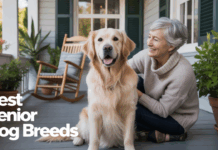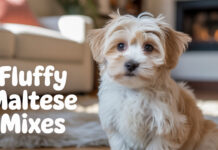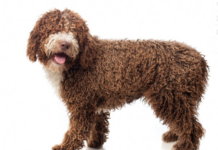Last Updated on January 19, 2024 by Dogs Vets
The Hidden Costs of Pet Ownership
The costs of pet ownership go beyond the initial purchase price and annual vaccinations. Pet ownership can be expensive, from food and toys to unexpected medical bills.
Luckily, there are ways to decrease these costs, for example, by purchasing pet insurance.
Keep reading to learn about the hidden costs of pet ownership and how you can decrease them.
Here are some key areas to be mindful of:
Financial costs:
- Initial expenses: Adoption fees, spaying/neutering, microchipping, initial vet visit, pet supplies (bed, food, crate,toys)
- Ongoing expenses: Food, routine vet care (vaccinations, flea/tick prevention), pet insurance (highly recommended!)
- Unexpected expenses: Emergencies, illnesses, chronic health issues, boarding or pet sitting.
Lifestyle costs:
- Time commitment: Pets require daily walks, playtime, feeding, cleaning up messes. Prepare for a change in your daily routine.
- Social limitations: Traveling becomes more complicated, spontaneous outings might be difficult with a pet in tow.
- Home damage: Chewed furniture, scratched doors, accidents – be prepared for some wear and tear, especially with puppies or kittens.
Emotional costs:
- Loss and grief: Pets have shorter lifespans than humans. Saying goodbye can be incredibly difficult.
- Behavioral challenges: Chewing, scratching, barking, separation anxiety – all these require patience and training.
- Commitment: A pet is a 10-15 year (or more) commitment. Be sure you’re ready for the long haul.
But wait! Before you get discouraged, remember: the rewards of pet ownership are immense. The unconditional love, companionship, and joy they bring are truly priceless.
However, being financially and emotionally prepared ensures both you and your furry friend can enjoy a happy, healthy life together.
Here are some additional tips:
- Do your research before choosing a pet. Consider your lifestyle, living situation, and budget.
- Adopt from a shelter or rescue organization. They often have animals already spayed/neutered and vaccinated.
- Create a budget for your pet’s expenses and stick to it.
- Start training early and be patient.
- Consider pet insurance for unexpected emergencies.
- Most importantly, shower your pet with love and enjoy the journey!
By being aware of the hidden costs and planning accordingly, you can set yourself and your furry companion up for a lifetime of happiness together.
Unexpected Medical Bills
While many people know that costs are associated with having a pet, such as food, toys, and vet bills, they may not be aware of the additional cost of unexpected medical bills.
Unexpected medical bills can be a huge financial burden, especially if you are unprepared for them. The cost of unexpected medical bills can range from a few hundred dollars to thousands of dollars.
One thing that can help the high costs of medical bills is having pet insurance. Pet insurance is much more affordable than paying out of pocket.
Forbes reports in 2022 that a dog’s pet insurance is $35 a month and for cats $28 a month. Make sure your pet is covered by per insurance so that when you receive an unexpected medical bill, you will not need to worry.
Carpet Cleaning
View this post on Instagram
When you add up the costs of your pet’s essentials, it’s easy to forget about one of the biggest expenses of pet ownership:
Carpet Cleaning
Sure, you can try to clean up pet accidents as soon as they happen, but even the best efforts won’t prevent stains and odors from building up over time.
And if you have a pet that likes to scratch or dig, the damage can be even worse. That’s why it’s so important to have a regular carpet cleaning schedule.
A good carpet cleaning service can remove deep-seated dirt and stains, as well as bad odors, leaving your carpets looking and smelling fresh and new.
If you’re unsure where to start, ask your friends or neighbors for recommendations, or check out online reviews.
Once you’ve found a reputable company, schedule regular cleanings to keep your carpets looking and smelling their best.
Pet Rent and Classes
Another cost of pet ownership that’s not always so obvious is pet rent. Many landlords and property managers charge tenants an extra monthly fee for having a pet.
The pet rent fee varies, but it’s usually a few hundred dollars a year.
Some people think this is unfair, mainly because it’s an extra cost that pet owners have to pay on top of their regular rent, while other people say that landlords have a right to charge this fee because it’s more work and money to have a pet in the building.
Regardless of whether you think it’s fair or not, many landlords charge this extra pet rent, so if you’re a pet owner, it’s essential to be aware of it and factor it into your budget. And if you’re looking for a place to live and have a pet, you should ask about the pet rent fee before signing a lease.
Another expense pet owners need to think about is training and obedience courses. Training and obedience classes can be costly, but they are also an investment in your pet’s long-term health and happiness.
There are many options when it comes to obedience classes.
You can find classes offered by local pet stores, animal shelters, and even private trainers. The important thing is to find a class that is right for your pet.
If you are new to pet ownership, it is essential to research and find a class that will help you establish a foundation of basic obedience commands. These commands will help you keep your pet safe and under control in any situation.
Facts Check
We hope you enjoyed this article… What are your thoughts on The Hidden Costs of Pet Ownership?
Please feel free to share this article!

















